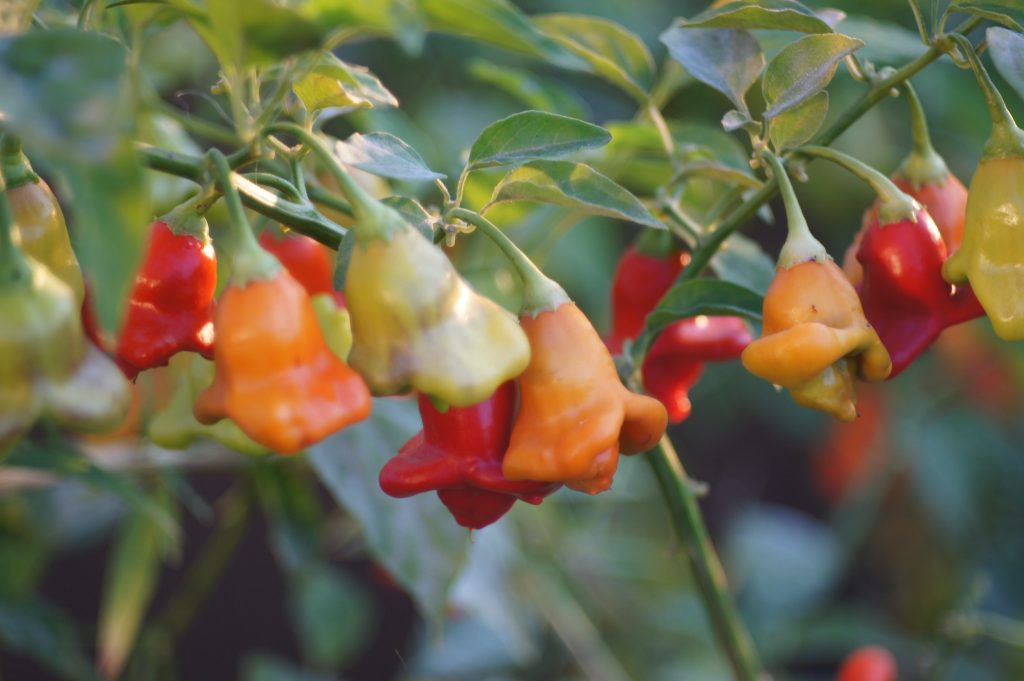Anyone who enjoys a spicy dish or two will likely have tasted many a chilli pepper! These delicious yet tongue-tingling treats are delicious as part of traditional curries, jambalayas and more – but how much do you really know about your chilli? Here are some fun facts about chilli peppers to really set your mouth watering.
1. Chilli peppers are actually fruits!
As they contain seeds within their flesh, your favourite chillis are technically fruits. They form from the centres of flowers on plants, which historically grew outdoors in warm climates (with plenty of rain).
2. You can grow chilli at home!
You don’t have to live in South America to grow some fantastic chilli of your own. Even if you normally get lots of rain and cold, you can grow peppers in your own garden.
However, they’ll probably fare better in a greenhouse or polytunnel where the temperature and water can be controlled. Alternatively, they make handy crops on a kitchen windowsill as a perennial plant with attractive leaves! Get gardening!
3. Columbus helped to spread chilli peppers the world over.
On his second voyage to the New World in 1493, famed explorer Christopher Columbus collected chilli peppers and returned with them to Spain. From there, they spread to Italy and beyond! Chilli peppers as we know them actually originated in Mexico, across Central America and down towards South America.
4. He wasn’t the only chilli exporter!
Portuguese explorers took Brazilian chillis to India, and from there, those spread throughout Asia and Africa.
5. We have birds to thank for chilli growth.
Common garden birds are great at spreading chilli pepper seeds purely because they eat and digest them without a spicy incident!
Birds do not have the sensory receptors in their mouth to taste capsaicin (a compound in chilli that causes burning sensations). Therefore, our feathered friends swallow chilli seeds, digest and excrete them, ready to grow new plants.
6. Extinguish chilli heat with milk, not water.
Though we may instinctively reach for a glass of water after a chilli-filled dish, it will not reduce the burning sensation as effectively as milk! Have a jug of the white stuff on standby if you’re sampling some spicy cuisine.
7. Chilli may cause physical problems for some.
Some medical issues can arise from tasting and/or digesting chilli peppers. These include irritation of the mouth and eyes. It’s always wise to handle them with care and to avoid rubbing your face too much while preparing a hot dish!
8. Chilli really do vary on the heat register.
We can measure chillis on the world-famous Scoville scale, which tells us how hot they’re going to be in our mouths. An “explosive” chilli on the scale might be a habanero, while a mild chilli at the other end of the scale may be an Anaheim chilli. A good midpoint for adventurous foodies may be the Cayenne chilli, rated as having a “raging” sensation!
9. Chilli peppers come in a few different colours.
Chilli peppers grow in a range of colours including red, green, purple, brown, black and yellow. Green peppers, in fact, turn red as they dry out!
10. Green chillies can be great for you.
Green chilli offer a rich source of beta-carotene and antioxidants. They’re also good sources of vitamins C and E. Add a few to your diet!
FAQs about Chilli Peppers
How many different types of chilli peppers are there?
It’s thought more than 4,000 different types of chilli exist globally, though these divide into just 33 different species. Five are related to the capiscum, a type of nightshade.
What’s the best-tasting chilli pepper?
While it’s super hot, the habanero is often claimed to be the best-tasting chilli pepper of the bunch. Your own tastes may vary – but if you can get past the heat, you’re in for a tasty treat.
What’s the most common chilli pepper?
You’ll likely find jalapeño peppers some of the most common chilli growing worldwide. They’re available in red and green varieties, and are commonly enjoyed in burritos, on pizzas, and more!
Further reading:
https://facts.uk/tag/fruit/
https://www.chilipeppermadness.com/chili-pepper-types/
https://www.healthline.com/nutrition/foods/chili-peppers
Do you know any fun facts about chilli peppers? Share them in the comments below!
